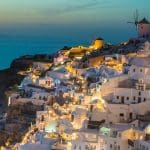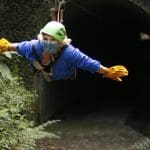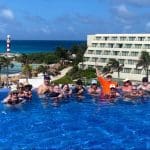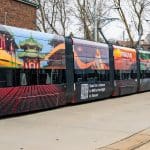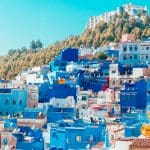CLAIRE SCOTT
Joining a sacred almsgiving ritual at Suthep hill in Chiang Mai, Thailand, running past water buffalo grazing next to giant limestone cliffs in Ninh Binh, Vietnam. Seeing the great Angkor Wat come into view at sunrise in Siem Reap, Cambodia — these memories from my final ‘Roamies’ tour will last me a lifetime.
The Roamies The Most Southeast Asia’ trip from G Adventures and Hostelworld truly lives up to its name. This small-group tour for 18-35 year olds gives travellers more than just a taste of Thailand, Vietnam and Cambodia.
Over 33 days, they will get an exceptional look at everyday life in these countries, and feel fully immersed in the culture, the history and the beauty of these extraordinary places — all while staying in epic hostels with new travel buddies hailing from across the globe.
There are several legs of this trip that travellers can join at various stages or, like me, do the full tour, which starts and ends in Bangkok in a loop that travels through Thailand, Vietnam and Cambodia.
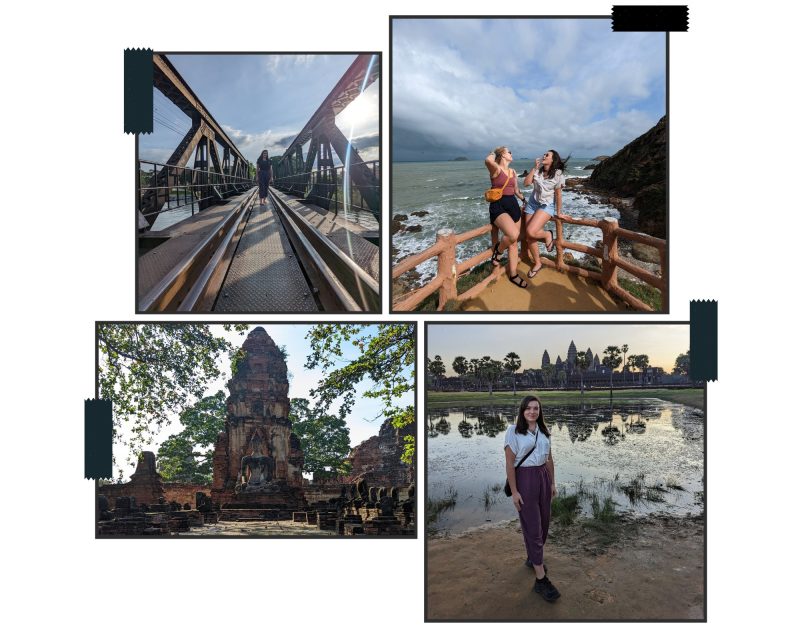
The Thailand leg of the tour takes six days and kicks off in Bangkok followed by Srinakarin Dam NP, Kanchanaburi, Ayutthaya before heading up north to Chiang Mai.
The trip covers flights from Chiang Mai to Hanoi where the adventure through Vietnam begins, with this leg making up 16 days of the trip. From Hanoi, move through the Vietnamese countryside with stops in Ninh Binh, Dong Hoi and Phong Nha. Then it’s on to Hue, Hoi An, Qui Nhon, Nha Trang and Ho Chi Minh city before the fishing town of Chau Doc.
From Chau Doc you cross the Tien Bien land border into Cambodia and the first stop here is Kampot. The Cambodian leg of the trip is nine days and includes an island adventure in Koh Rong before moving to the capital of Phnom Penh and finally Siem Reap. The trip ends with two days back in Bangkok for an exciting end to over a month of immersive travel.
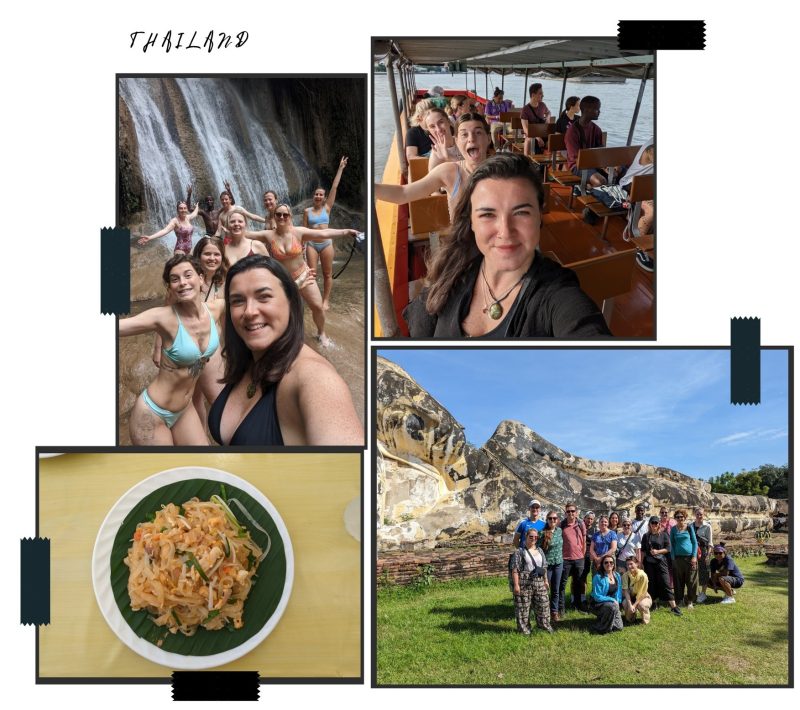
Chiang Mai was one of my many highlights from Thailand. We spent three nights here exploring the night markets and eating local dishes.
After arriving in Chiang Mai on the night train from the historical city of Ayutthaya, we headed straight to Huen Phen, one of the oldest restaurants in the city and famous for its local dishes. We tried Khao Soi, a spicy coconut noodle and chicken soup,it was delicious. The eggplant mash, pork with herbs and Chiang Mai sausage were fantastic.
Our CEO (chief experience officer) in Thailand, who goes by the nickname ‘Spicy Joe’, was eager for us all to try authentic dishes during the trip. I’ve tasted everything from cricket to barbecued rat while exploring Thailand and I wouldn’t have it any other way.
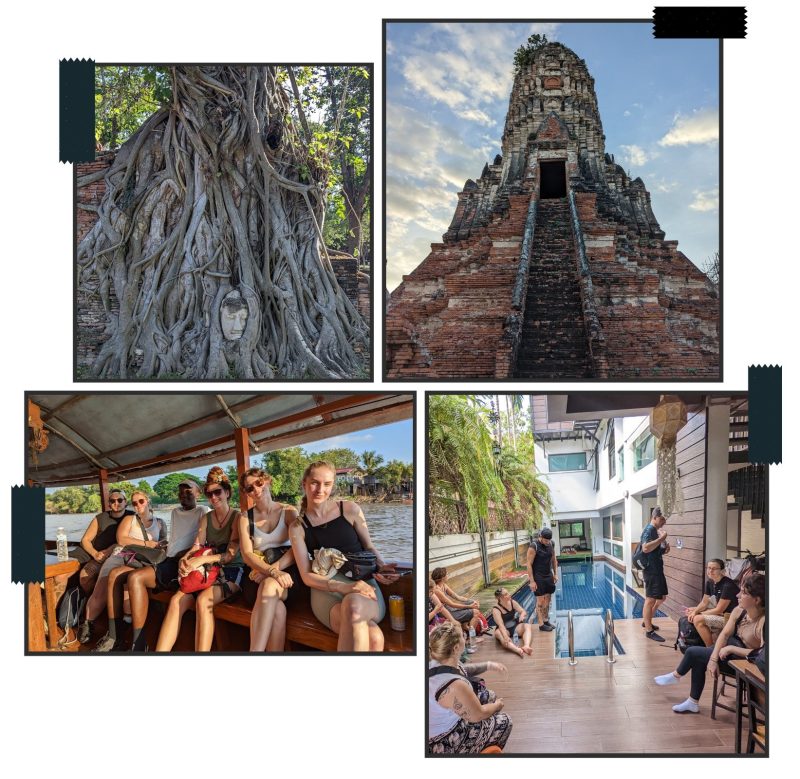
Our hostel stay here was Poshtel 33 which was perfectly located. Far enough away from the hustle and bustle of the markets to ensure a great night’s sleep, but close enough to the action when you want it, Poshtel33 was full of surprises – from a tranquil swimming pool on the ground floor to beautiful dorms and a yoga area where you could find your zen.
On day six of the tour we got to experience an ancient ceremony at the foot of Suthep Hill, located about 45 minutes outside Chiang Mai. At sunrise, locals and lay people offered food to buddhist monks as a way of giving thanks. It’s a beautiful way to start the day and it felt very special to be able to join the ritual.
It’s also worth the 5.30am start! After the ceremony, we climbed 309 steps up to visit the golden temple of Wat Phra That Doi Suthep. The architecture here is stunning, particularly the 75-meter golden stupa or spire. On a clear day, there is a beautiful view of downtown Chiang Mai.
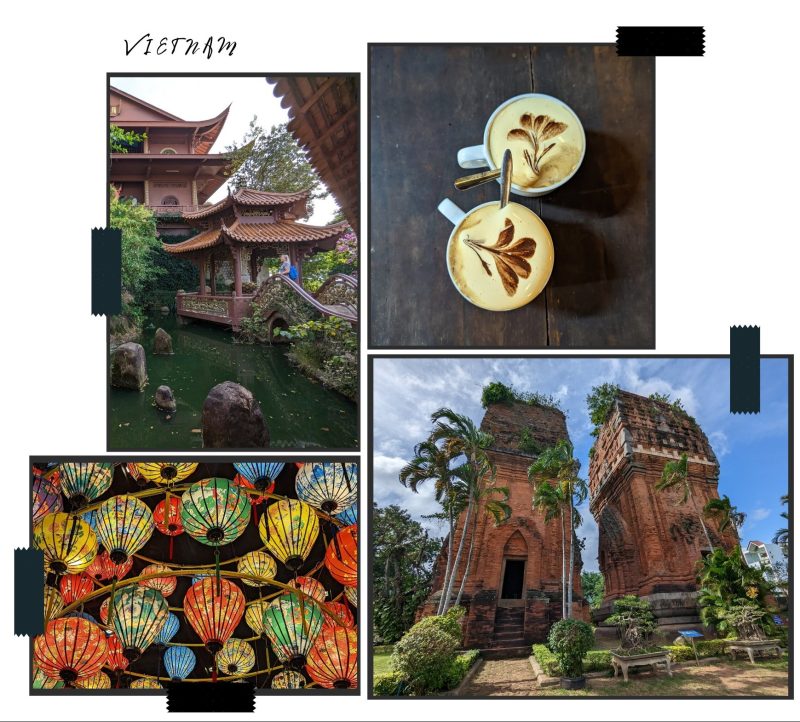
On days 10 and 11 of the trip, we stayed in Trang An in Vietnam’s Ninh Binh province, which is a UNESCO World Heritage Site. The area is known for its characteristic limestone peaks that dot the rural landscape. The region is often referred to as ‘Ha Long Bay on land’ because of these huge rock structures that jut out across the terrain.
We spent the night in the Trang An River View Homestay which had the most striking setting at the foot of a cliff overlooking the Sao Khe river. The sunset here was truly magical.
On day 11, I went for a run on the dirt roads surrounded by the huge limestone peaks with water buffalo grazing near the paddy fields. The experience was surreal. The homestay offers its guests bikes to explore the area, and you’re sure to be greeted with smiles and waves from the locals.
One of the things I really loved about this trip was getting to see parts of Vietnam I know I wouldn’t have thought to visit if I had planned the trip myself. I generally stick close to the hubs of activity in the major cities or the beach towns of the new countries I visit, so getting to explore Vietnam’s countryside was an experience I will truly treasure.
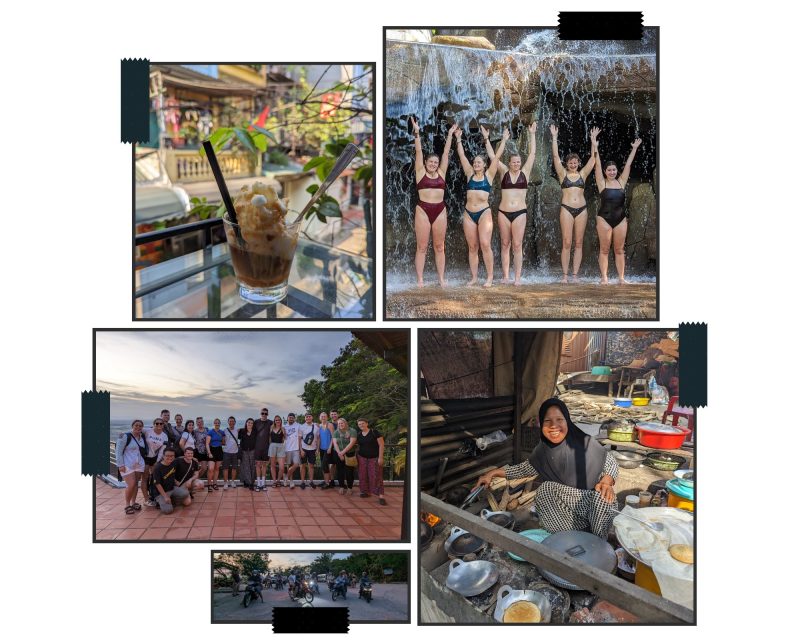
Hoi An is a stunning, historical city in central Vietnam that we explored from days 15-17. The Old Town is extraordinary to wander through and I highly recommend taking a boat ride on the Thu Bon river to see the multi-coloured lanterns light up the town at night.
Included in the visit here is a ‘G for Good’ moment, which is an activity that helps support local community initiatives in the destination G Adventures is operating its tour. In Hoi An, our group had a cooking class at a training restaurant called Oodles of Noodles. Our group learned about the different noodles typical of the Quang Nam region, such as Mi Quang, Banh Cuon and Pho.
As our Vietnamese CEO, Huy says, “when you travel with G you should feel so proud” because the company works closely with the communities it visits and aims to ensure that money brought in through tourism supports the local economy and genuinely helps the community.
Oodles of Noodles is managed by an NGO called Streets International which provides apprenticeship programs for disadvantaged youth to develop skills, enabling them to work in the tourist industry.
G Adventures and Planeterra — G Adventures’ non-profit partner — joined with Streets International to develop this cooking class to expand the training kitchen and enable students to practice their English with travellers. To date, the initiative has helped over 500 people in the community.
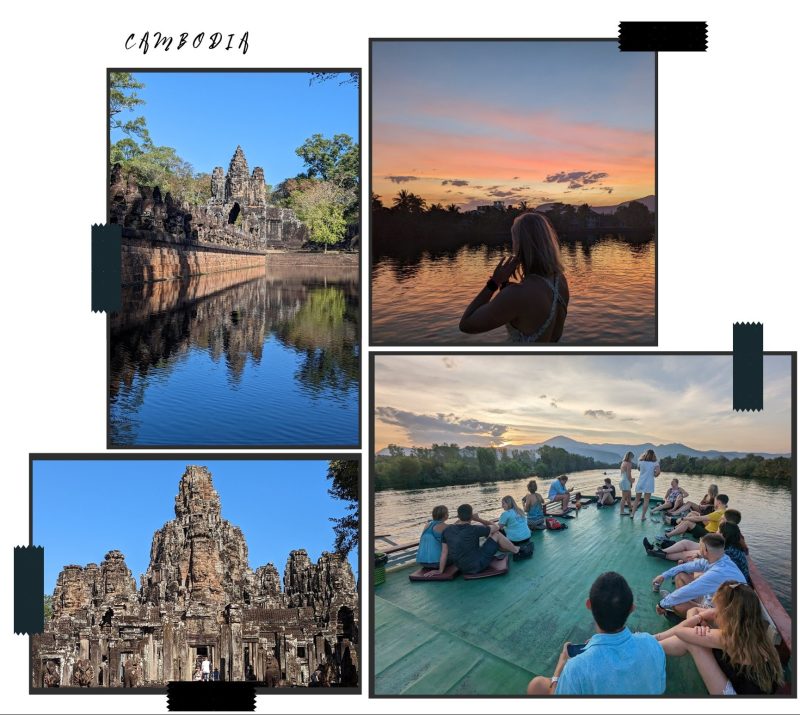
I had visited Cambodia previously and didn’t have the chance to visit the Killing Fields in Phnom Penh during that trip. It was a priority for me to visit them this time and to try to understand the horrors that took place in the late 70s when the country was taken over by the Khmer Rouge.
For our group, understanding the genocide was an important part of visiting this country. The regime aimed to create a communist agrarian utopia and in pursuit of this goal, people were forced to work in labor camps, and perceived enemies of the state, including intellectuals, ethnic minorities, and religious groups were killed. A quarter of the country’s population were lost, which is an estimated 1.5 to 3 million people.
Our CEO, Huy, knew an incredible local guide, Che Therath, who brought us to the Cheoung Ek Genocide Centre and the S21 museum, where prisoners of the Khmer Rouge regime were tortured and killed. He shared his own story of his survival — as a 10-year-old boy he was separated from his family and sent to work in a camp until he was 13. While some of his family members survived, 42 were killed during the regime.
After Phnom Penh, we moved north to Siem Reap. Even though I’d been fortunate to visit Siem Reap before, I was so excited to return. Here we stayed in one of my favourite hostels of the trip, Lub D Siem Reap. It felt like the place was built by someone who had spent a lot of time in hostels and new exactly what backpackers are looking for – full- sized lockers for each person with a pole on top to dry a towel or hang clothes, plug sockets with USBs for each bunk and a small shelf so you don’t have to cuddle your phone for the night, plus a curtain covering your bunk for privacy.
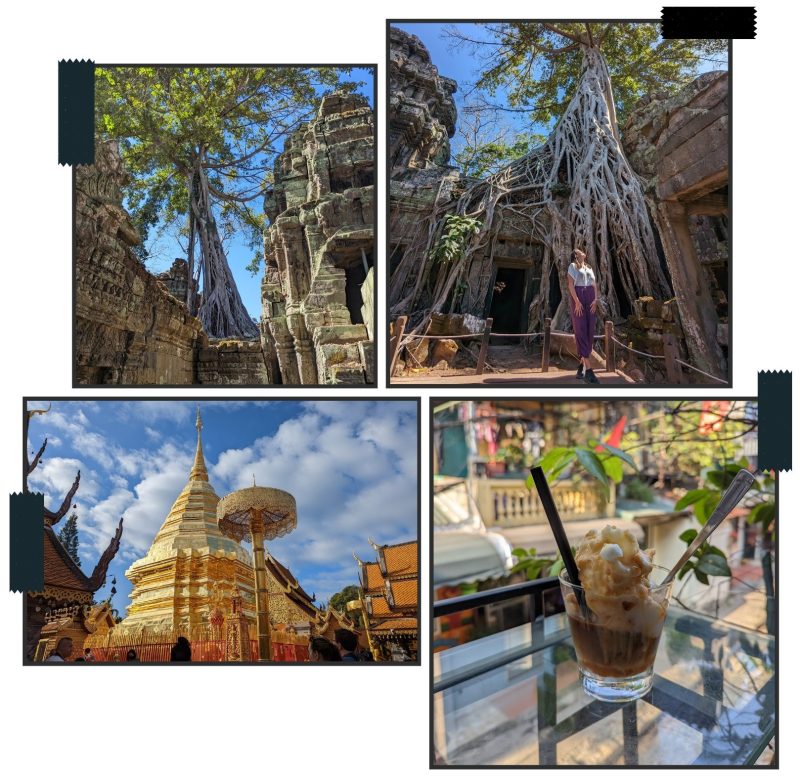
The women’s bathroom had plenty of toilet cubicles and separate showers, there was even a hairdryer, straightener and a coin operated washer and dryer — pretty much everything was covered. It ticked all my boxes.
The main event in Siem Reap is of course Angkor Wat. This is an optional activity on the itinerary and one not to be missed. There’s a feeling you get walking through the entrance to the Angkor Wat complex in complete darkness, with just the outline of its iconic cone shaped pillars on the horizon. As the morning breaks, the features of this extraordinary monument become clearer. It’s popular with tourists and a special experience to share with the friends you’ve come to know and love after a month-long adventure across southeast Asia.
After visiting Angkor Wat, there are countless temple ruins to explore in the Angkor archeological park but, be sure to finish your Angkor exploration with a visit to the jungle temple — Ta Prohm — constructed in the 12th century with huge, overgrown tree roots wrapped around ruins, it’s humbling to experience something so ancient.
Ultimately, The Most Southeast Asian trip had too many highlights to include in this feature, like a street food tour in Hanoi where we sat on the sides of bustling streets on plastic seats eating bowls of Pho or Bun Cha or coconut ice cream and sticky rice. Or biking between ancient temples in Ayutthaya in Thailand and finishing the day with a sunset boat ride on the Chao Phraya River. Or partying at a backpacker resort in Koh Rong that had its own private beach. While there’s so much I could tell you about this trip, it’s just one of those things you have to experience for yourself.

Who would suit this trip: Active 18-35 year olds who would like an even mix between experiencing the culture of Southeast Asia, exploring temples and trying local cuisine, as well as nights out on the town.
What should they be aware of: You won’t require a visa for Thailand, but for Vietnam ensure you book your e-visa at least a month in advance and ensure you have the day of entry accurate on your visa. You will have to purchase a new visa if the date is incorrect. Don’t purchase an e-visa for Cambodia, the border control at land border crossings require you to pay entry on arrival, they won’t be able to scan your e-visa here.
What should they be prepared for: In terms of packing, your clothes should be light — think t-shirts and shorts for the most part. Women should pack at least one pair of loose fitting, long pants or a skirt and have tops that cover their shoulders – it’s a requirement for entering temples. However, in each country there are plenty of markets selling suitable clothes for entering temples. Bring warm clothes, ear plugs and an eye mask for travelling on night trains. There is one night train in Thailand and three on the Vietnamese leg of the tour, so it’s helpful to be prepared. Bring plenty of Deet insect repellent spray for mosquitoes, too.
What should they know about the accommodation: With ‘Roamies’ trips the accommodation is always fun, comfortable and secure. For the most part, you are bunking with only your fellow ‘Roamies’ travellers on the trip but sometimes, if the hostel is busy you will have others staying in the dorms who are not on the trip. Across all five of my ‘Roamies’ experiences, there have never been any issues with this.
Anything else?: ‘Roamies’ trips give you a lot of opportunity to do your own thing.There are free days built in across the trip where you can take a break and relax or add on optional activities. Your CEO will be able to provide information on the best things to do in the area you’re visiting and the best prices to pay. Examples of great optional activities on this trip are a cruise in Ha Long Bay while visiting Hanoi and exploring Angkor Wat in Cambodia.

